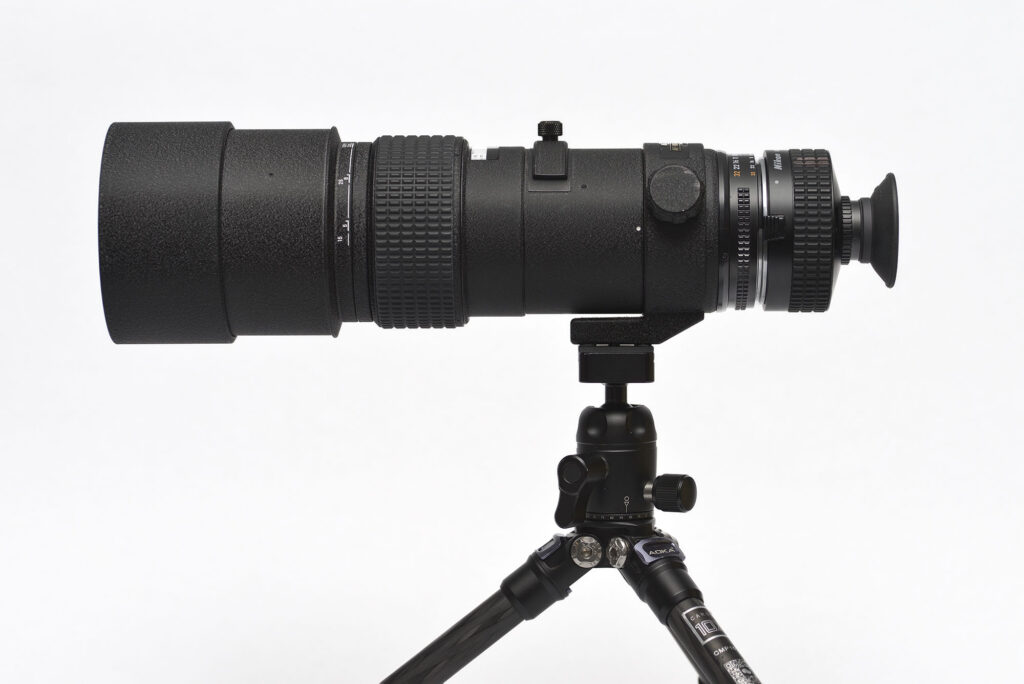This showed up in a bin of miscellaneous camera gear acquired from a pawnbroker friend of mine. I had never seen one in the wild, much less used one. This device, long since discontinued by Nikon, is a fun piece of kit that I have enjoyed more than I expected.
What is it, exactly? Mounting this to the rear of a Nikon F-mount lens essentially turns the lens into a telescope. The degree of magnification depends on the focal length of the lens. That degree of magnification is calculated by dividing the focal length of the lens by 10. For example, a 300mm lens becomes a 30x telescope (300 ÷ 10 = 30), a 150-500mm lens becomes a 15x-50x variable power telescope, etc. To use a lens as a spotting scope, it just makes sense to use a lens with an integral tripod mount.

Image quality is remarkably good as l long as I mount it to a good lens. Since it only uses the central area of the lens, the better corrected the lens is, the better the image. Flaws become quite visible, flare will be exaggerated, and chromatic aberration will fringe heavily. My favorite lens to use with this is the Nikkor ED AF 300mm f4, which is very well corrected. Because of the optics in the converter, no advantage is gained when using a lens faster than f3.5, except that those lenses can be stopped down to that point to reduce those aberrations.
Thinking outside the box, what happens when you put it on a macro lens? You get a high-quality magnifying loupe (albeit a bit bulky). I mounted it to a Micro-Nikkor 55mm f2.8 with a PK-13 extension tube. The field of view at closest focus was only 10mm (3/8”). At the infinity focus mark the field of view was 21mm (13/16”). Detail was amazing, and it was quite bright under just a desk lamp. You won’t be chasing amoebas with it, but it allows the user to see details one might miss with the naked eye.

The eyepiece has a diopter adjustment, and there is an eyecup that helps block stray light. It is built to typical Nikon standards, which means it’s tough. There are also two points of attachment for a lanyard, wrist or neck strap. Since it was made during the manual focus era, don’t expect it to work well with modern autofocus lenses. G-series lenses close the aperture when unmounted, and there is no provision built into the converter to open it.
I don’t know how the original Nikon converters compare to the new aftermarket versions currently available. Nor can I determine if the benefits outweigh the retail cost, but if you have a good, long lens and the need for this kind of versatility, it may be worth looking into.

